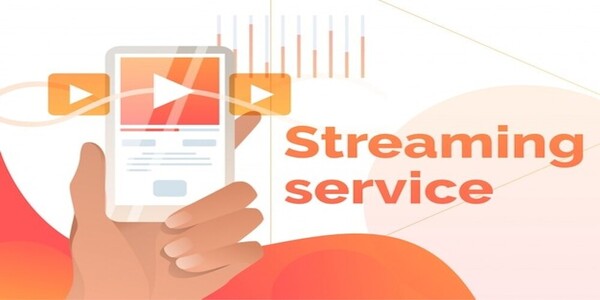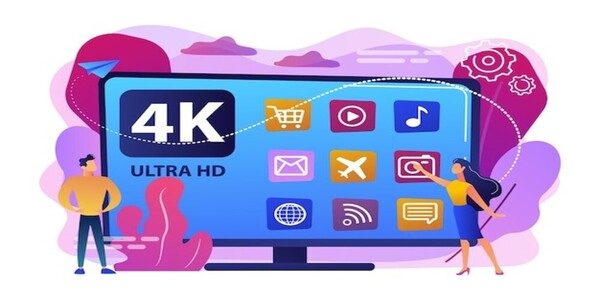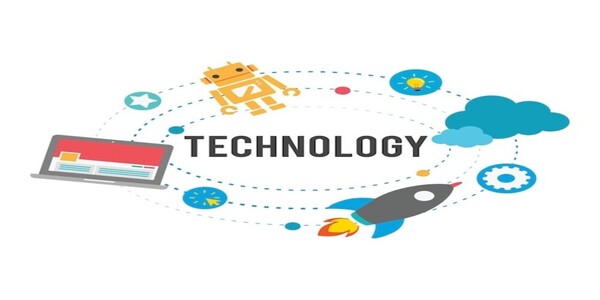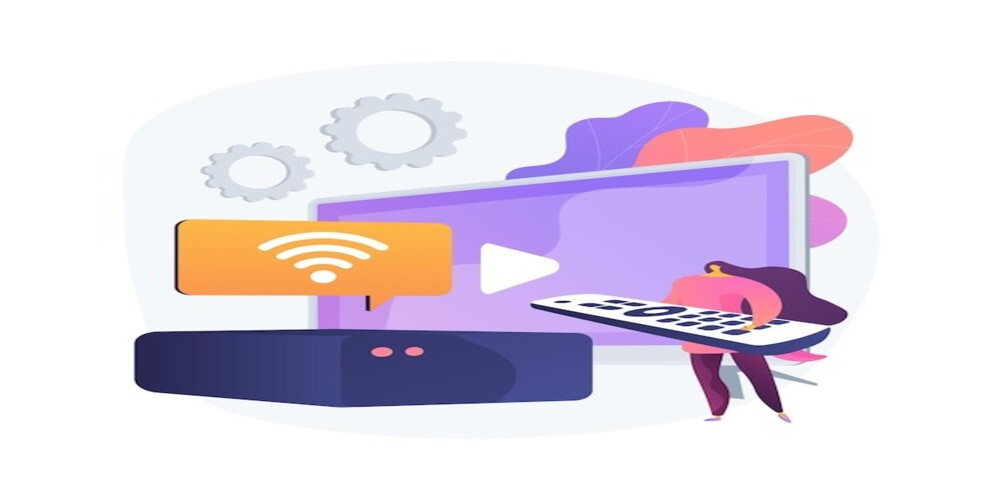
Are you looking for a way to watch your favorite shows without having to pay the expensive cable bills? If so, Over-the-Top (OTT) streaming technology may be just the thing for you. OTT streaming has become one of the hottest new TV trends in recent years, allowing viewers access to tons of content from their favorite networks and streaming services with minimal cost and no contract or long-term commitment. In this blog post, we’ll discuss why OTT is quickly becoming the future of television viewing for millennials and tech savvy individuals; highlighting its affordability benefits over traditional TV subscription plans, its variety of content options, as well as how it enables more convenience than ever before.
What is OTT Streaming, and How Has it Changed the Way We Watch TV

OTT streaming, or over-the-top streaming, refers to the delivery of video content over the internet directly to viewers, bypassing traditional cable or satellite TV providers. This means that viewers can access and watch their favorite TV shows, movies, and other content on their own schedule, using a wide range of devices including smartphones, tablets, smart TVs, and streaming devices like Roku or Amazon Fire TV.
OTT streaming has dramatically changed the way we watch TV by providing a more flexible, personalized, and convenient viewing experience. With OTT streaming, viewers no longer have to be tied to a specific TV schedule or rely on a cable or satellite subscription to access their favorite content. Instead, they can choose from a vast array of streaming services, each offering its own unique content library and features.
OTT streaming has also spurred the development of original programming, with streaming services like Netflix, Hulu, and Amazon Prime Video producing their own content that is often critically acclaimed and beloved by viewers. This has created new competition in the TV industry, challenging traditional cable and satellite providers to keep up with viewers’ changing preferences and expectations.
Overall, OTT streaming has empowered viewers by giving them more control over what they watch, when they watch it, and how they access it, and has transformed the TV industry in the process.
Breaking Down the Pros and Cons of OTT Streaming

Here are some of the pros and cons of OTT Streaming:
Pros of OTT Streaming:
Flexibility: OTT streaming allows viewers to watch their favorite shows and movies on their own schedule, from anywhere with an internet connection.
Customization: Viewers can choose from various streaming services to find the one that best fits their viewing preferences and budget.
Cost-effective: Many streaming services are less expensive than traditional cable TV packages, and viewers only pay for the content they want to watch.
No contracts: Unlike cable TV providers, most OTT streaming services don’t require viewers to sign a long-term contract, giving them the flexibility to cancel or switch services at any time.
Cons of OTT Streaming:
Internet connectivity: To use OTT streaming services, viewers need a reliable internet connection, which may only be available or affordable for some.
Limited live TV options: While some streaming services offer live TV channels, they generally offer fewer options than traditional cable or satellite TV providers.
Content gaps: While many streaming services offer a wide range of content, there may still be some shows or movies that are only available on cable TV channels.
Subscription fatigue: With so many streaming services available, viewers may end up subscribing to multiple services to access all the content they want, which can add up quickly.
Breaking Down the Pros and Cons of Cable TV

Pros of Cable TV:
Live content: Cable TV offers live content, such as news and sports, which may not be available on streaming services.
Bundling options: Cable TV providers often offer bundle deals that include internet and phone services, which can be more cost-effective than subscribing to each service separately.
Channel selection: Cable TV providers offer a wide range of channels, including premium channels that may not be available on streaming services.
Cons of Cable TV:
Limited flexibility: Cable TV is tied to a specific schedule, and you must be at home watching your favorite shows or movies.
Limited customization: Cable TV providers offer set packages of channels, and you may need to pay for channels you don’t want to get the ones you do.
Cost: Cable TV can be more expensive than OTT streaming, especially when you consider hidden fees and long-term contracts.
Ultimately, the choice between OTT streaming and cable TV depends on your personal preferences, viewing habits, and budget. Both options have their own advantages and disadvantages, so it’s important to carefully consider your options and choose the one that best fits your needs.
Technology Advances that Are Making OTT Streaming Even More Attractive

OTT streaming has already transformed the way we watch TV, but there are several technology advances that are making it even more attractive. Here are a few examples:
5G networks: The introduction of 5G networks promises faster and more reliable internet connections, which will help reduce buffering and improve video quality for streaming services.
Artificial Intelligence (AI): AI is being used to improve recommendations and personalization on streaming services. By analyzing a user’s viewing history and preferences, AI can suggest content that is more tailored to their individual tastes.
Virtual Reality (VR): VR is being integrated into some streaming services, offering users an immersive viewing experience. For example, users can feel like they are in the middle of a concert or sports event by using VR headsets.
Cloud-based streaming: Cloud-based streaming allows for more storage and computing power, making it possible to stream high-quality content without worrying about storage limitations or device specifications.
Advanced video codecs: New video codecs, such as AV1 and HEVC, are being developed to improve video streaming quality while reducing the bandwidth required. This means that users can enjoy high-quality video streaming on a wider range of devices, including those with slower internet connections.
Multi-device support: OTT streaming services are becoming increasingly compatible with a wider range of devices, including smart TVs, gaming consoles, and mobile devices. This allows users to access their content from any device, making it more convenient to watch their favorite shows and movies on the go.
Overall, these technology advances are helping to make OTT streaming even more attractive to users by offering improved quality, personalization, and convenience. As technology continues to evolve, it’s likely that OTT streaming will continue to grow and become even more popular in the future.
Cost Comparison of OTT Streaming vs Cable TV

The cost comparison between OTT streaming and cable TV can be complex and depends on several factors, including your location, the type of content you want to watch, and your specific viewing habits. Here are some general cost comparisons to consider:
OTT Streaming Costs:
Subscription fees: OTT streaming services like Netflix, Hulu, and Amazon Prime Video typically charge a monthly subscription fee. These fees can range from $6 to $15 per month for each service.
Add-ons: Some streaming services offer add-ons, such as premium channels (HBO, Showtime, etc.), for an additional monthly fee.
Equipment costs: Most streaming services require a device to access the content, such as a smart TV, streaming stick, or gaming console. These devices can range in price from $30 to $150 or more, depending on the device and brand.
Cable TV Costs:
Monthly fees: Cable TV providers typically charge a monthly fee that includes a set number of channels. Depending on the provider and package, these fees can range from $30 to $100 or more per month.
Equipment costs: Cable TV providers often require a set-top box or DVR to access the content, which can add fee of $5 to $20 per month.
Hidden fees: Cable TV providers may also charge additional fees, such as installation fees, activation fees, and early termination fees.
When comparing the costs of OTT streaming vs cable TV, it’s important to consider the specific channels and content you want to watch and any additional fees or equipment costs. In general, OTT streaming services can be more cost-effective if you only want to watch specific shows or movies and are willing to invest in a compatible device. Cable TV may be a better option if you want access to live to program, such as sports or news.
Tips for Choosing the Right OTT Streaming Provider for You

Here are some tips to help you find the right provider for you:
Determine your needs: The first step in choosing an OTT streaming provider is to determine your needs. Consider what type of content you want to watch, how many people will be using the service, and what devices you will use to access the content.
Research available options: Once you have determined your needs, research the available options. Some popular streaming providers include Netflix, Hulu, Amazon Prime Video, Disney+, and HBO Max. Look at what each service offers in terms of content, pricing, and features.
Check device compatibility: Make sure the streaming service is compatible with the devices you plan to use. Most services are available on multiple platforms, such as smart TVs, streaming sticks, gaming consoles, and mobile devices. Check to see if the service requires any specific hardware or software.
Consider pricing: Compare the pricing of each service, including any subscription fees, add-ons, or equipment costs. Some services offer different pricing tiers with different features, so consider what each tier includes.
Look at the user interface: Check out the user interface of each streaming service to make sure it is user-friendly and easy to navigate. Some services offer personalized recommendations and a customizable interface.
Check for free trials: Many OTT streaming providers offer free trials so you can test the service before committing to a subscription. Take advantage of these free trials to see if the service meets your needs.
Read reviews: Read reviews from other users to get an idea of each provider’s quality of service and customer support. Look for recent reviews from users with similar needs to yours.
The Future of Television – What’s Next in the World of OTT Streaming

Here are some of the latest developments and trends to keep an eye on:
More original content: OTT streaming providers have invested heavily in creating original content in recent years, which is expected to continue. As traditional media companies focus on streaming, the competition for high-quality content will only increase.
Increased interactivity: Some OTT streaming providers are experimenting with more interactive features like choose-your-own-adventure-style programming and interactive quizzes. This trend will continue as viewers seek more engaging and immersive experiences.
Live streaming: Live streaming is becoming more prevalent in the world of OTT streaming, particularly in the areas of sports and news. As more people cut the cord and turn to streaming for their entertainment needs, the demand for live programming is likely to increase.
Integration with smart home technology: OTT streaming providers are exploring ways to integrate with smart home technology, such as voice assistants and smart speakers. This integration will allow viewers to control their streaming experience using voice commands.
Personalization: As streaming providers gather more data on their viewers, they are using this information to provide more personalized recommendations and programming. This trend is expected to continue, with providers using artificial intelligence and machine learning to provide even more personalized experiences.
Virtual and augmented reality: While still in the experimental stages, some OTT streaming providers are exploring the use of virtual and augmented reality in their programming. This technology could allow viewers to immerse themselves even more fully in their watching content.
Overall, the future of television is bright, with more options, more interactivity, and more personalization than ever before. As OTT streaming continues to evolve and expand, viewers can expect even more exciting developments and innovations in the years to come.
In Conclusion
OTT streaming has proved to be a revolutionary way of watching TV. It not only offers tremendous convenience but also provides access to many more shows and movies, as well as the ability to stream content with heightened quality and less buffering than traditional cable TV. This all makes for a much better viewing experience, which is often more affordable. Despite the potential issues with slower internet speeds, lockout restrictions and other minor drawbacks, it’s clear that OTT streaming is set to remain the dominant form of television distribution for years to come. Those pondering making a switch should research beforehand to make an informed decision when selecting the right streaming provider while considering their budgetary needs and preferences.


